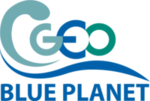Technologies for Observing and Monitoring Plastics in the Oceans
|
Plastics in the oceans pose a mounting existential threat to life in the oceans and on land, including human life, and technologies to observe, measure and monitor the flow of plastics into, and within, the oceans are urgently needed in support of mitigating the threat. ESA & Copernicus initiatives to face the Challenges of Marine Litter trackingAnne Vallette (1), Manuel Arias (1), Stefano Alliani (2), Andres Cozar (3), Konstantinos Topouzelis (4), Shungu Garaba (5), Mark Hennen (6), Philippe Bryere (1), Francois-Regis Martin-Lauzer (7), Craig Jacobs (1), Antoine Mangin (1)Affiliations: (1) ARGANS France; (2) ISMAR-CNR; (3) Universidad de Cadiz; (4) University of Aegean; (5) University of Oldenburg; (6) ARGANS Ltd; (7) ACRI; ABSTRACTARGANS Ltd and ACR have been working on the topic of marine litter for more than 15 years with academic partners and industry (space companies and water/waste/ energy companies), focusing on litter management in coastal areas, e.g. cleaning of shorelines. In this frame, two aspects have been of interest: (a) understanding of the dynamics of marine litter since its introduction in the marine environment to its landing on the seafloor or the shore; (b) check the use of satellite data to overcome the lack of observations at sea, as well as provide synoptic view of the problem with a higher spatial and temporal sampling –even design new satellite missions. Part of these efforts take the shape of 4 current projects run on behalf of ESA, UKSA and with support of the COPERNICUS Programme. Aims are to check the capability of current satellites to bring information about marine litter that could be exploited by numerical models mimicking the behavior of litter at nature, and also to establish a technological baseline that could be implemented in the future in the form of an EO mission devoted to marine litter monitoring. These two points are an answer of our organization to the scientific questions and needs brought by the community, as well as to the information requirements provided by additional stakeholders (EEA - Sustainable Blue, Environmental Agency UK - Innovation UK, UN Environment -GESAMP). In both cases, it has been clearly stated the need for synoptic solutions able to merge existing marine litter data, and also provide log-term solutions for the lack of sampling. The ultimate idea is to help to fill existing knowledge gaps about marine litter distribution, behavior at sea and plastic mass budget at the different maritime domains (beaches, seafloor, water column, surface). As such, solutions of remote sensing covering at least the surface of the ocean help to put constrains to the problem, but any monitoring solution shall benefit of the corresponding layer of numerical modelling to create realistic scenarios of use for the community. In this presentation, the authors present a summary of these efforts, including results from "CMEMS LitterTEP" (Copernicus), "Remote Sensing for Marine Litter" (RESMALI -ESA/ESTEC), "GeoInt service for Marine Litter" (SSGP-UKSA), and "EO Track for marine litter at the Mediterranean Sea" (EO4Society-ESA/ESRIN). Results show that a combination of satellite information supported by numerical models is an optimal solution for this issue, particularly after the achievement of marine litter using public satellites. The authors also show some of the existing challenges that need specific efforts to improve results using the proposed techniques. |
This workshop was sponsored by:
 |

|